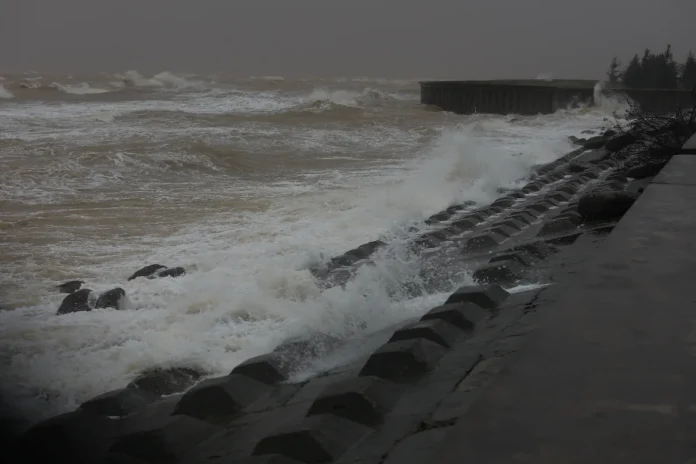Climate scientists warn warmer seas are intensifying typhoons like Kalmaegi, with back-to-back storms increasing damage potential across Southeast Asia.
SINGAPORE: As the year’s deadliest typhoon sweeps into Vietnam after wreaking havoc in the Philippines earlier this week, scientists warn such extreme events can only become more frequent as global temperatures rise.
Typhoon Kalmaegi killed at least 188 people across the Philippines and caused untold damage to infrastructure and farmland across the archipelago.
The storm then destroyed homes and uprooted trees after landing in central Vietnam late on Thursday, killing at least five people.
Kalmaegi’s path of destruction coincides with a meeting of delegates from more than 190 countries in the rainforest city of Belem in Brazil for the latest round of climate talks.
ALSO READ: Typhoon Kalmaegi brings rain and destruction to Vietnam as death toll nears 200 in Philippines
Researchers say the failure of world leaders to control greenhouse gas emissions has led to increasingly violent storms.
“The sea surface temperatures in both the western North Pacific and over the South China Sea are both exceptionally warm,” said Ben Clarke, an extreme weather researcher at London’s Grantham Institute on Climate Change and Environment.
“Kalmaegi will be more powerful and wetter because of these elevated temperatures, and this trend in sea surface temperatures is extremely clearly linked to human-caused global warming.”
WARMER WATERS PACK “FUEL” INTO CYCLONES
While it is not straightforward to attribute a single weather event to climate change, scientists say that in principle, warmer sea surface temperatures speed up the evaporation process and pack more “fuel” into tropical cyclones.
“Climate change enhances typhoon intensity primarily by warming ocean surface temperatures and increasing atmospheric moisture content,” said Gianmarco Mengaldo, a researcher at the National University of Singapore.
“Although this does not imply that every typhoon will become stronger, the likelihood of powerful storms exhibiting greater intensity, with heavier precipitation and stronger winds, rises in a warmer climate,” he added.
MORE INTENSE BUT NOT YET MORE FREQUENT
While the data does not indicate that tropical storms are becoming more frequent, the number of intense storms has increased, said Mengaldo, who co-authored a study on the role of climate change in September’s Typhoon Ragasa.
“The total number of typhoons occurring each year has not shown a clear long-term increase,” he said.
“Yet, the frequency of the most intense events and rapid intensification episodes has risen, likely driven by warmer oceans and greater atmospheric instability associated with climate change.”
Last year, the Philippines was hit by six deadly typhoons in the space of a month, and in a rare occurrence in November, saw four tropical cyclones develop at the same time, suggesting that the storms might now be happening over shorter timeframes.
“Even if total cyclone numbers don’t rise dramatically annually, their seasonal proximity and impact potential could increase,” said Drubajyoti Samanta, a climate scientist at Singapore’s Nanyang Technological University.
“Kalmaegi is a stark reminder of that emerging risk pattern,” he added.
BACK-TO-BACK STORMS CAUSING MORE DAMAGE
While Typhoon Kalmaegi is not technically the most powerful storm to hit Southeast Asia this year, it has added to the accumulated impact of months of extreme weather in the region, said Feng Xiangbo, a tropical storm researcher at Britain’s University of Reading.
“Back-to-back storms can cause more damage than the sum of individual ones,” he said.
“This is because soils are already saturated, rivers are full, and infrastructure is weakened.
At this critical time, even a weak storm arriving can act as a tipping point for catastrophic damage.”
Both Feng and Mengaldo also warned that more regions could be at risk as storms form in new areas, follow different trajectories and become more intense.
“Our recent studies have shown that coastal regions affected by tropical storms are expanding significantly, due to the growing footprint of storm surges and ocean waves,” said Feng.
“This, together with mean sea level rise, poses a severe threat to low-lying areas, particularly in the Philippines and along Vietnam’s shallow coastal shelves.” –
Reuters







